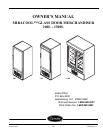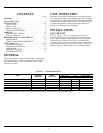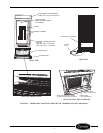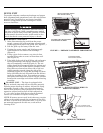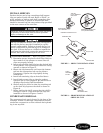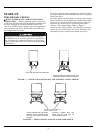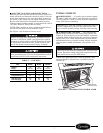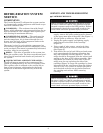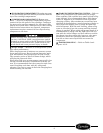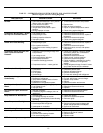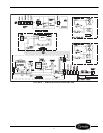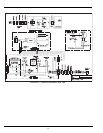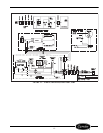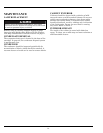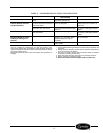
10
TABLE 3 — REFRIGERATION SYSTEM SERVICE AND ANALYSIS CHART
(Refer to Figures 10-12 for wiring diagrams)
NOTE: All servicing must comply with state and federal regulations.
MALFUNCTION POSSIBLE CAUSE SOLUTION
Compressor Will Not Start —
No Hum.
1. Line cord not plugged in. 1. Plug in the cord.
2. Power disconnect switch in OFF position.
(Sizes 1100L and 1300L only.)
2. Turn disconnect switch to ON position.
3. Fuse removed or blown. 3. Replace fuse.
4. Overload protector tripped. 4. Refer to electrical section.
5. Temperature control stuck in open
position.
5. Repair or replace temperature control.
6. Wiring improper or loose. 6. Check wiring against diagram.
Compressor Will Not Start — Hums
but Trips on Overload Protector.
1. Low voltage to unit. 1. Determine reason and correct.
2. Relay failing to close. 2. Determine reason and correct, replace if
necessary.
3. Starting capacitor defective. 3. Determine reason and replace.
4. Improperly wired. 4. Check wiring against diagram.
Compressor Starts but Does Not
Switch Off of Start Winding.
1. Low voltage to unit. 1. Determine reason and correct.
2. Relay failing to open. 2. Determine reason and correct; replace if
necessary.
3. Run capacitor defective. 3. Determine reason and replace.
4. Compressor motor winding is open or
shorted.
4. Determine cause, correct, and replace
compressor.
Compressor Starts and Runs, but
Short Cycles on Overload
Protector.
1. Additional current passing through over-
load protector.
1. Check wiring diagram. Check for added
fan motors, pumps, etc. connected to
wrong side of protector.
2. Low voltage to unit. 2. Determine reason and correct.
3. Overload protector defective. 3. Check current, replace protector.
4. Run capacitor defective. 4. Determine reason and replace.
5. Excessive discharge pressure. 5. Check ventilation, restrictions in cooling
medium, restrictions in refrigeration
system.
6. Compressor too hot — return gas hot. 6. Check refrigerant charge; fix leak if neces-
sary. Check airflow across condenser.
Unit Runs, but Short Cycles. 1. Overload protector. 1. Check wiring diagram for correct wiring.
2. Cold control. 2. Differential set too close.
3. Overcharge. 3. Reduce refrigerant charge.
4. Air in system. 4. Recover and recharge.
5. Undercharge. 5. Fix leak and recharge with refrigerant.
Unit Operates Long or
Continuously.
1. Dirty condenser. 1. Clean condenser.
2. Shortage of refrigerant. 2. Fix leak, add charge, correct charge.
3. Temp control contacts stuck or frozen. 3. Replace Temp control.
4. Evaporator coil iced. 4. Defrost.
5. Restriction in refrigeration system. 5. Determine location and remove.
Start Capacitor Open, Shorted or
Blown.
1. Relay contacts not opening properly. 1. Replace relay.
2. Low voltage to unit. 2. Determine reason and correct.
3. Improper relay. 3. Replace.
Run Capacitor Open, Shorted or
Blown.
1. Improper capacitor. 1. Determine correct size and replace.
2. Excessively high line voltage (110% of
rated max).
2. Determine reason and correct.
Relay Defective or Burned Out. 1. Incorrect relay. 1. Check and replace.
2. Line voltage too high or too low. 2. Determine reason and replace.
3. Relay being influenced by loose vibrating
mounting.
3. Remount rigidly.
Space Temperature Too High. 1. Control setting too high. 1. Reset control.
2. Overcharged with refrigerant. 2. Recover refrigerant and recharge with
proper charge specified on dataplate.
3. Inadequate air circulation. 3. Improve air movement.
Cooler Freezing Beverage. 1. Temperature control knob set too high. 1. Reset control.
Unit Noisy. 1. Loose parts or mountings. 1. Find and tighten.
2. Tubing rattle. 2. Reform to be free of contact.
3. Bent fan blade causing vibration. 3. Replace blade.
4. Fan motor bearings worn. 4. Replace motor.



